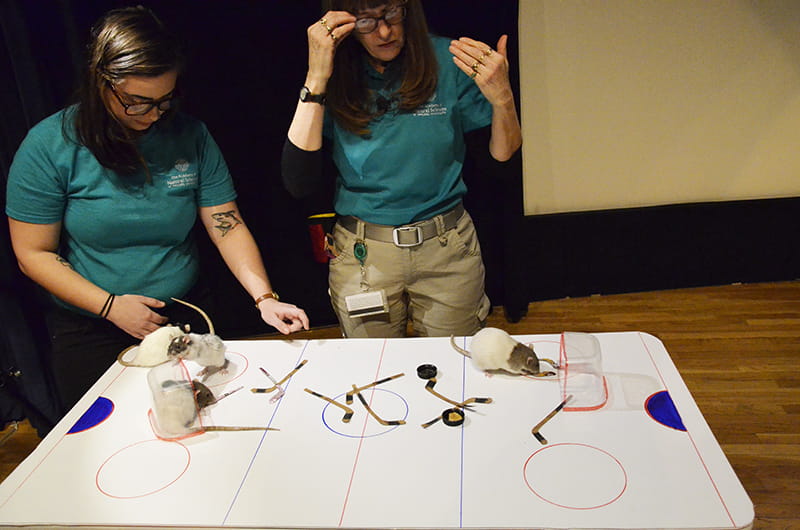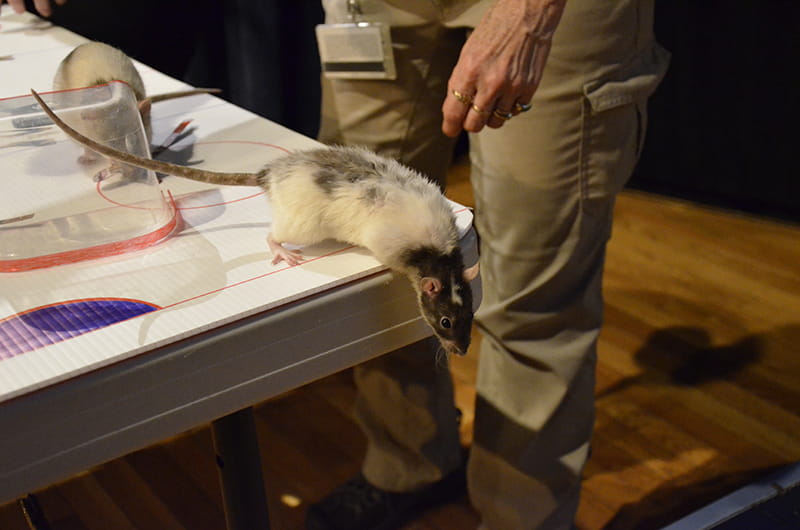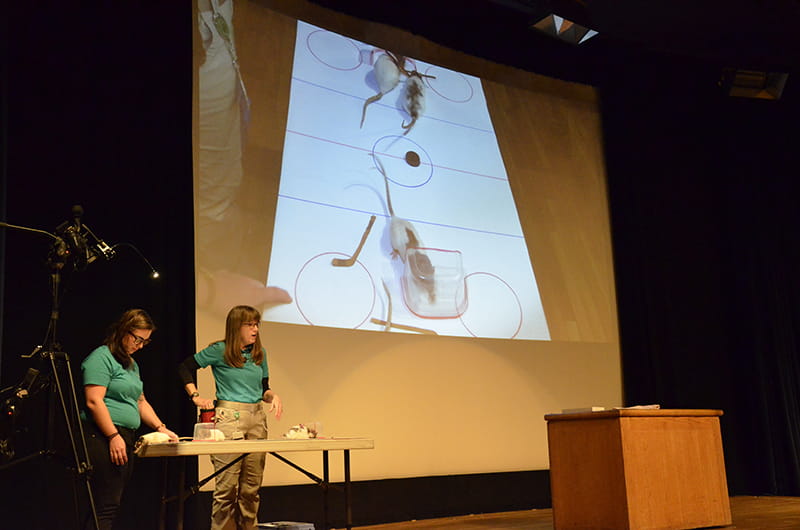Hockey with Rats, Curling with Turtles: It's Animal Olympics Week at the Academy
 By Jared Brey
By Jared Brey

- Drexel’s Hydration Stations Cut Plastic Waste and Costs
- Philadelphia Films With Drexel University Cameos
- Drexel University Receives Higher Education Excellence and Distinction (HEED) Award for Its Culture of Belonging
- New Research Recommendations for Supporting Autistic Adults to Ensure Their Communication Success

Standing over a miniature hockey rink in the Academy of Natural Sciences auditorium, Cindy Geiger-Jenkins was trying to manage expectations.
“They’re guaranteed to scamper around,” she announced to the families that had gathered in the front row, referring to the four rats waiting inside a covered cage at center ice. “We’ll at least have scampering.”
It was the second day of the Academy Winter Games, a weeklong animal Olympics competition held during the human 2018 Winter Olympics. To induce the athletes to engage in hockey-like behavior — the team was made up of four rats named Ray, Meg, Tinkerbell and Leia — Geiger-Jenkins had smeared the hockey sticks with peanut butter and put banana chips inside the pucks. She tossed some raisins around the rink for good measure.
Released from their cage, the teammates scampered in all directions.
“Rats are actually spectacular athletes,” said Geiger-Jenkins, a part-time teacher naturalist at the Academy. “Rats can jump three feet high in the air. They can run six miles an hour. They can swim half a mile in an open sea. When a ship goes down in the ocean, you come back three days later and there will be rats still swimming.”

Athletic, perhaps. But hardly focused on winning. A rat had dismantled a puck to remove the banana chip.
“Tinkerbell does not get the idea of the game,” Geiger-Jenkins noted.
Not that winning was really the point. Rats like to eat just about everything, so throughout history they’ve followed humans pretty much wherever they go, Geiger-Jenkins told the audience, about half of whom were children. They live to be about two years old. They can have babies of their own starting at about two months, and will give birth to as many as 100 in a year. They have poor eyesight, but they’re good at spotting motion, and they have very strong noses. Fancy rats, the species on the rink, were kept as pets by humans beginning in the 19th century.
The point of the day’s exercise — aside from honoring the hockey team’s human counterparts in Pyeongchang — was behavioral enrichment. Every day, the animals that live at the Academy of Natural Sciences are given activities that help them stay healthy and happy. Rats have a very strong urge to chew on things, Geiger-Jenkins said. If they don’t, their teeth will get too long.

“They like to chew,” she said. “They like to scamper. They like to hold things in their little paws.”
The game lasted about 10 minutes. Several competitors entered the goal nets bodily, but none of them appeared to bring a puck in with them. One rat tried to jump out of the rink and was caught in mid-flight by Geiger-Jenkins’ assistant, Christina.
Overall, how did they perform?
“Poorly,” Geiger-Jenkins admitted in a post-game interview. “I would say they did not medal. But there was fun. Fun ensued.”
The fun isn’t over. Join the Academy today, at 11 a.m. for turtle curling or Thursday at 11 a.m. for cockroach speed skating. And don’t miss the Academy Winter Games medal ceremony on Friday at 2:30 p.m. All of these events are free with admission.
In This Article
Drexel News is produced by
University Marketing and Communications.